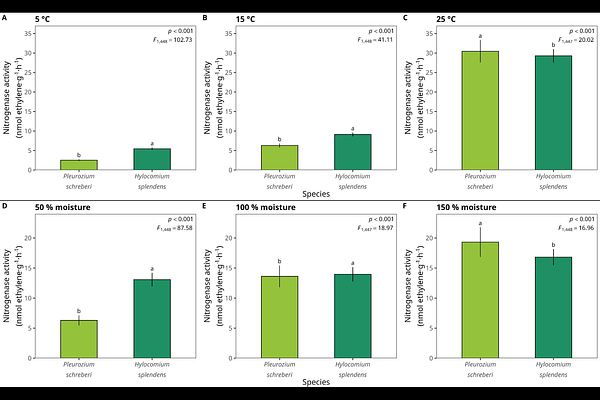Climate change impacts the structure and nitrogen-fixing activities of subarctic feather moss microbiomes across a precipitation gradient

Climate change impacts the structure and nitrogen-fixing activities of subarctic feather moss microbiomes across a precipitation gradient
Alvarenga, D. O.; Wynns, J. T.; Nesme, J.; Prieme, A.; Rousk, K.
AbstractAssociations between feather mosses and cyanobacteria are crucial sources of new biologically available nitrogen (N) in arctic and subarctic ecosystems. The physiology of both mosses and cyanobacteria is strongly influenced by environmental factors such as temperature and moisture, which directly affect N2 fixation rates. These associations may be threatened by climate change, since it leads to warmer and drier conditions in polar regions. In this study, we investigated the N2-fixing microbial communities associated with two common feather mosses across a precipitation gradient in the subarctic tundra, followed by a temperature and moisture experiment. Using acetylene reduction assays, nifH gene sequencing and qPCR, we evaluated how shifts in temperature and moisture influence nitrogenase activity and N2-fixing community structure. Our results showed that N2 fixation was highest in sites with greater precipitation and increased with both temperature and moisture. Cyanobacteria dominated N2-fixing communities, but currently unclassified bacteria also seemed to play a significant role, particularly at high temperatures. The number of cyanobacterial nifH copies tended to decrease with temperature, while the relative abundance of unclassified bacteria increased. These findings suggest that the N2-fixing activity, abundance and diversity of cyanobacteria associated with feather mosses in the subarctic will decline under warmer and drier conditions, potentially leading to a shift in the composition of feather moss-associated microbial communities in a warmer Arctic, with potential consequences for N input into the ecosystem.